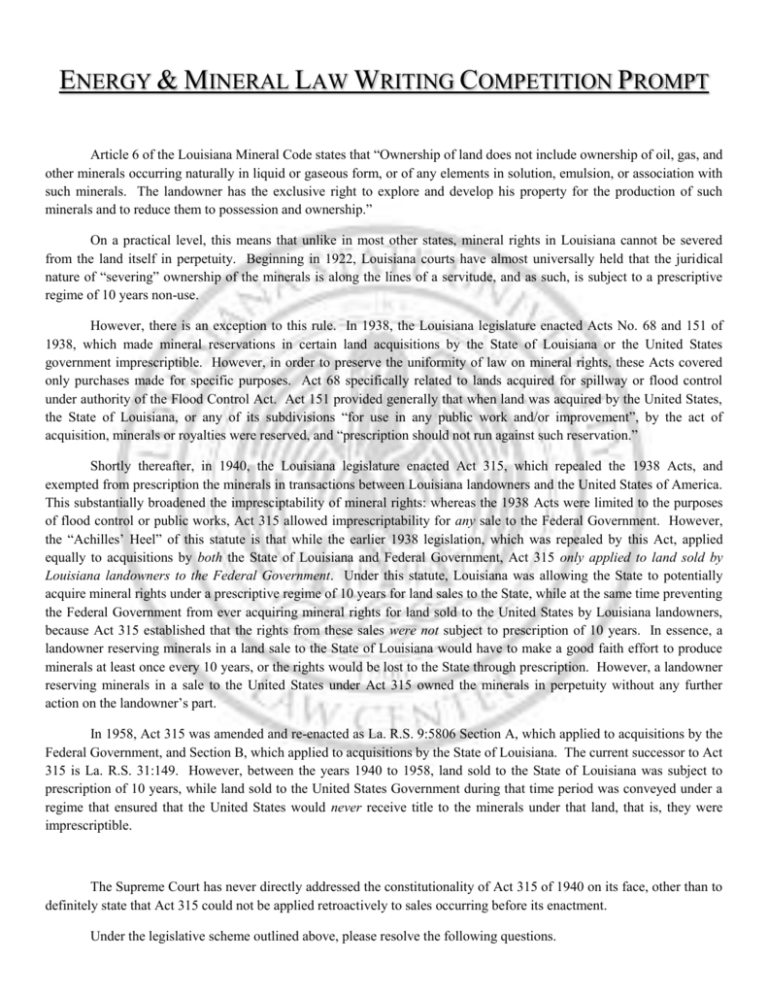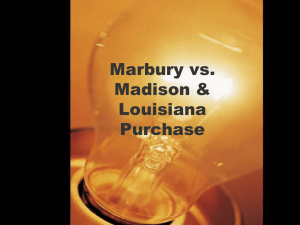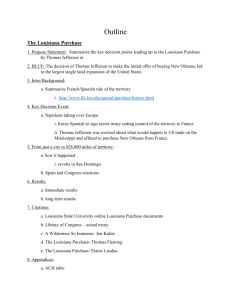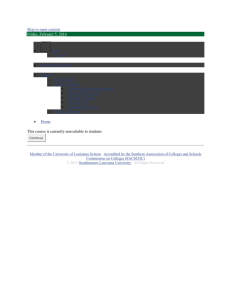Energy & Mineral Law Writing Competition Prompt
advertisement

ENERGY & MINERAL LAW WRITING COMPETITION PROMPT Article 6 of the Louisiana Mineral Code states that “Ownership of land does not include ownership of oil, gas, and other minerals occurring naturally in liquid or gaseous form, or of any elements in solution, emulsion, or association with such minerals. The landowner has the exclusive right to explore and develop his property for the production of such minerals and to reduce them to possession and ownership.” On a practical level, this means that unlike in most other states, mineral rights in Louisiana cannot be severed from the land itself in perpetuity. Beginning in 1922, Louisiana courts have almost universally held that the juridical nature of “severing” ownership of the minerals is along the lines of a servitude, and as such, is subject to a prescriptive regime of 10 years non-use. However, there is an exception to this rule. In 1938, the Louisiana legislature enacted Acts No. 68 and 151 of 1938, which made mineral reservations in certain land acquisitions by the State of Louisiana or the United States government imprescriptible. However, in order to preserve the uniformity of law on mineral rights, these Acts covered only purchases made for specific purposes. Act 68 specifically related to lands acquired for spillway or flood control under authority of the Flood Control Act. Act 151 provided generally that when land was acquired by the United States, the State of Louisiana, or any of its subdivisions “for use in any public work and/or improvement”, by the act of acquisition, minerals or royalties were reserved, and “prescription should not run against such reservation.” Shortly thereafter, in 1940, the Louisiana legislature enacted Act 315, which repealed the 1938 Acts, and exempted from prescription the minerals in transactions between Louisiana landowners and the United States of America. This substantially broadened the impresciptability of mineral rights: whereas the 1938 Acts were limited to the purposes of flood control or public works, Act 315 allowed imprescriptability for any sale to the Federal Government. However, the “Achilles’ Heel” of this statute is that while the earlier 1938 legislation, which was repealed by this Act, applied equally to acquisitions by both the State of Louisiana and Federal Government, Act 315 only applied to land sold by Louisiana landowners to the Federal Government. Under this statute, Louisiana was allowing the State to potentially acquire mineral rights under a prescriptive regime of 10 years for land sales to the State, while at the same time preventing the Federal Government from ever acquiring mineral rights for land sold to the United States by Louisiana landowners, because Act 315 established that the rights from these sales were not subject to prescription of 10 years. In essence, a landowner reserving minerals in a land sale to the State of Louisiana would have to make a good faith effort to produce minerals at least once every 10 years, or the rights would be lost to the State through prescription. However, a landowner reserving minerals in a sale to the United States under Act 315 owned the minerals in perpetuity without any further action on the landowner’s part. In 1958, Act 315 was amended and re-enacted as La. R.S. 9:5806 Section A, which applied to acquisitions by the Federal Government, and Section B, which applied to acquisitions by the State of Louisiana. The current successor to Act 315 is La. R.S. 31:149. However, between the years 1940 to 1958, land sold to the State of Louisiana was subject to prescription of 10 years, while land sold to the United States Government during that time period was conveyed under a regime that ensured that the United States would never receive title to the minerals under that land, that is, they were imprescriptible. The Supreme Court has never directly addressed the constitutionality of Act 315 of 1940 on its face, other than to definitely state that Act 315 could not be applied retroactively to sales occurring before its enactment. Under the legislative scheme outlined above, please resolve the following questions. (1) On January 24, 1939, a Judgment Order was granted by the District Court of the United States for the Eastern District of Louisiana. This Judgment Order expropriated approximately 2,500 acres from a large Louisiana landholding family, in Section 50 of Township 20 South, Range 30 East, Southeastern District of Louisiana, on the west bank of the Mississippi River in Plaquemines Parish, Louisiana. The condemnation was made for the purpose of establishing a Federal Wildlife Refuge, in order to maintain the biological integrity, diversity and environmental health of our nation’s natural resources. Who do you believe owns the minerals under the 2,500 acres, and why? (2) Who should own the minerals in the question above? In other words, consider “swampland” that is unsuitable for surface development, but may hold subsurface minerals. Under respective state law, a Texas landowner could sell this land to an environmental organization for purposes of establishing a wildlife sanctuary to provide habitat for threatened species, and could retain the mineral rights in perpetuity without any further action on his part. A Louisiana landowner making a similar sale would have to make a good faith effort to produce the minerals at least every 10 years or lose them to the buyer. This clearly imposes significant costs and duties on Louisiana landowners that landowners in other states are not subject to. Which way is better in your view? Should there be circumstances where Louisiana landowners could permanently sever mineral rights from the land, and why? | MINERAL LAW INSTITUTE, ENERGY AND MINERAL LAW SOCIETY, & LSU JOURNAL OF ENERGY LAW AND RESOURCES 2013 ENERGY LAW WRITING COMPETITION









